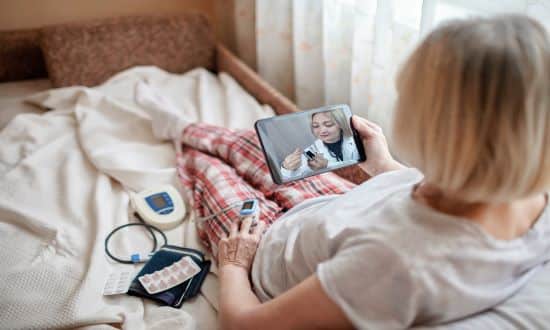Public open to virtual care, but lack of understanding could block progress

The UK public is on balance supportive of virtual wards, but a lack of understanding of the term may be holding back public support for them, new analysis from the independent health charity, the Health Foundation suggests.
A survey commissioned from Censuswide by the Health Foundation found that 45% of the public are supportive of virtual wards, with around a third of those surveyed either “not very” or “not at all” supportive – and there were no significant differences in this pattern across the four UK nations.
However, when asked if they would be happy to monitor their own health at home instead of in a hospital – describing a similar type of scenario but avoiding the term virtual ward – a more positive picture emerged: 78% of the public said they would be happy to do this, whereas only 13% would not.
This suggests a lack of understanding of virtual wards could be stymying support for the policy, which risks slowing the take-up of this model of care – potentially denying patients access to appropriate care at home and keeping people in hospital when they don’t need to be there.
Virtual wards – which allow patients to get hospital-level care at home, while still being in regular contact with health professionals – are a key element of NHS England’s plan for tackling the backlog of care.
They can be used instead of admitting people to hospital or to enable patients to be discharged sooner, and in some cases are supported by technologies that help people monitor their health at home.
With NHS England aiming for more than 10,000 virtual ward beds by winter to ease the pressure on hospitals, including a recently announced expansion to cover children, securing the backing of patients and the public for this new model of care will be critical to the Government’s efforts to reduce the backlog.
A recent Digital Health Networks Exchange event found that enlisting the help and enthusiasm of clinicians would also be of key importance.
The analysis also found that support for virtual wards varied with how much someone knew about how the NHS was using technology.
Those who said that they knew “a great deal” or “some” about how the NHS was using technology were significantly more likely to be supportive of virtual wards compared to those who said they knew “very little” or “nothing at all” (69% and 52% compared to 35% and 24%).
Greater acceptance amongst those more likely to need healthcare
Disabled people, people with a carer, and carers themselves were significantly more likely to support virtual wards compared to the general population (50%, 58%, and 55%, respectively, compared to 45% among the population as a whole).
More people in socioeconomic groups D and E – which represent around 25% of the UK population – are unsupportive of virtual wards than supportive (by 38% to 36%).
People in these socioeconomic groups who say they would not want to be treated through a virtual ward, are more likely to say it is because their home wouldn’t be suitable compared to the population as a whole.
Older people are more open to using virtual wards, under the right conditions. Just 21% of those aged 65 and over say they would not want to be treated through a virtual ward, compared to 36% of 16–24-year-olds.
NHS staff in our survey were, on balance, clearly supportive of virtual wards (by 63% to 31%).
Dr Malte Gerhold, director of innovation and improvement at the Health Foundation, said: “Done right, virtual wards have the potential to provide safe care for patients in the comfort of their own homes, avoiding the risks to their recovery that come with extensive hospital stays and freeing up much-needed hospital beds.”
“It is encouraging to see support for virtual wards is higher among those more likely to require health care, such as older people, disabled people, and those with a carer.
“As virtual wards are rolled out, the NHS will need to consider the barriers that households can face and make sure they have the right support available.”





1 Comments
PLEASE PLEASE read Roy Lilly’s article!
Without properly defined terms as to what a ‘virtual ward’ is and does and without adequate investment in both the Acute and Community sectors this has as much likelihood of success as did the Care in the Community initiative.
Comments are closed.